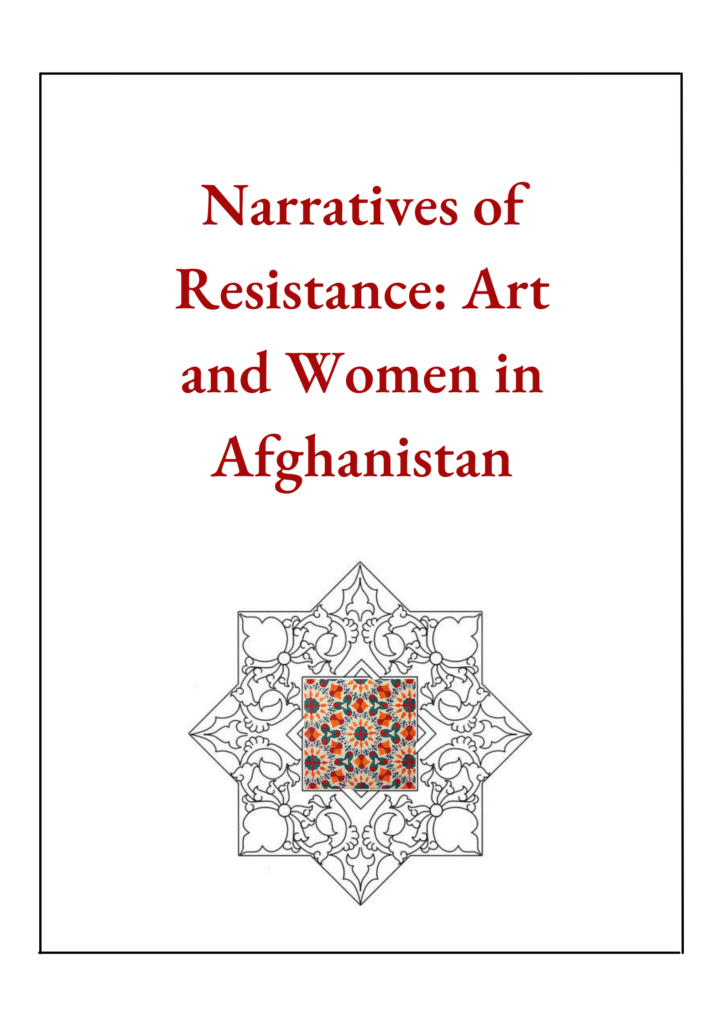
Introduction
The framing narrative of the ongoing crisis in Afghanistan is eerily similar to the post-9/11 call to action to ‘civilised people’ on behalf of Afghan women. Laura Bush’s famous radio address on Taliban and the oppression of women is representative of the discourse formation through which the U.S. sought to legitimise the violence that it unleashed through its military might for a supposed ‘greater good’—providing rights and freedom to Afghan women. Gayatri Chakravarti Spivak first described this dynamic in the context of British rule in India. In her 1988 essay, she explains that the British rule in India chose to justify its presence in the subcontinent in the name of freeing Muslim, Hindu or pagan women from their repressive cultures[i]. This specific rhetoric on Afghan women is detrimental to them as it assumes that all Afghan women are victims and in need of saving, and that this saving will ultimately come from outside forces in the form of Western intervention. It further goes on to imply that all women in Afghanistan experience conflict and violence in the same way, relegating them to a monolithic bloc without accounting for their differences and their current and historical role in political resistance.
In any discussion on Afghan women, one needs to practice caution against this saviour narrative, which refuses to recognise the plurality of Afghan women, with respect to their dreams, political inclinations, ethnicity, economic status and visions for the future, just like women of any nationality. There has be to a recognition that while Afghan have been victims of violence and conflict, they are in no way passive victims that are incapable of fighting for their rights. The use of art as an instrument of change and criticism by women has a had long history of the country. It has been used by women as a medium for self representation, presenting a challenge to over-simplified hegemonic narratives in the West, to open spaces for dialogue and expression within their own communities, and to offer a more nuanced account of their own identities. For Roozi, a poet, her poetry is an act of self-narration and self-representation to an outside world, and a ‘way to break that order’ of the global media that looks for ‘the specific story’ to fit their own pre conceived notions about Afghanistan[ii]. Meanwhile, Shamsia Hassani, an Afghan graffiti artist, believes that artists play a crucial role in society and in public debates. Through her work, she hopes to not only beautify a city torn by war, but also encourage people to think and to question.
Women artists in Afghanistan have and are producing resistance in many forms, whether bodily, or through films, books, theatre, dance and music. They are using art to remind the oppressors that even without guns, it is possible to resist. Their works have helped tell the story of this country in the process of radical change. While some traditional crafts have been lost, works evolving from recent wars reflect the results of constantly living with conflict. Our series, Narratives of Resistance: Art and Women in Afghanistan is envisioned as a portal honouring the voices of Afghan women artists. Shifting from a discourse preoccupied with oppression, we hope to share stories of courage and resilience of how women in Afghanistan are using arts and culture as tools for peace activism and raising awareness. As noted by women Afghan scholars and artists, it is becoming increasingly important for Afghan women to reclaim space to self-identify by not allowing Western-driven ideas of Afghan women to dominate the discourse on them. Many women have and continue to use art as a source of documentation of their lived experiences and as a medium to self-generate the image and narratives about Afghan women. By putting across these authentic accounts and representations, their art is helping the world better understand what is exactly at stake in Afghanistan and how women’s rights can be protected. From carpet weaving to animations, Afghan women artists are adding to the resistance movement by shedding light on the realities of women and girls under the Taliban regime and the normalization of gender based oppression.
[i] See Spivak, In Marxism and the Interpretation of Culture, ed. Cary Nelson and Lawrence Grossberg. Urbana: University of Illinois Press, 1988, 271–313.
[ii] Ghani, Bilquis, and Lucy Fiske. “‘Art Is My Language’: Afghan Cultural Production Challenging Islamophobic Stereotypes.” Journal of Sociology, vol. 56, no. 1, Mar. 2020, pp. 115–129, doi:10.1177/1440783319882536.
Please read the stories below to start the circle of conversation in the comments section of each post!
